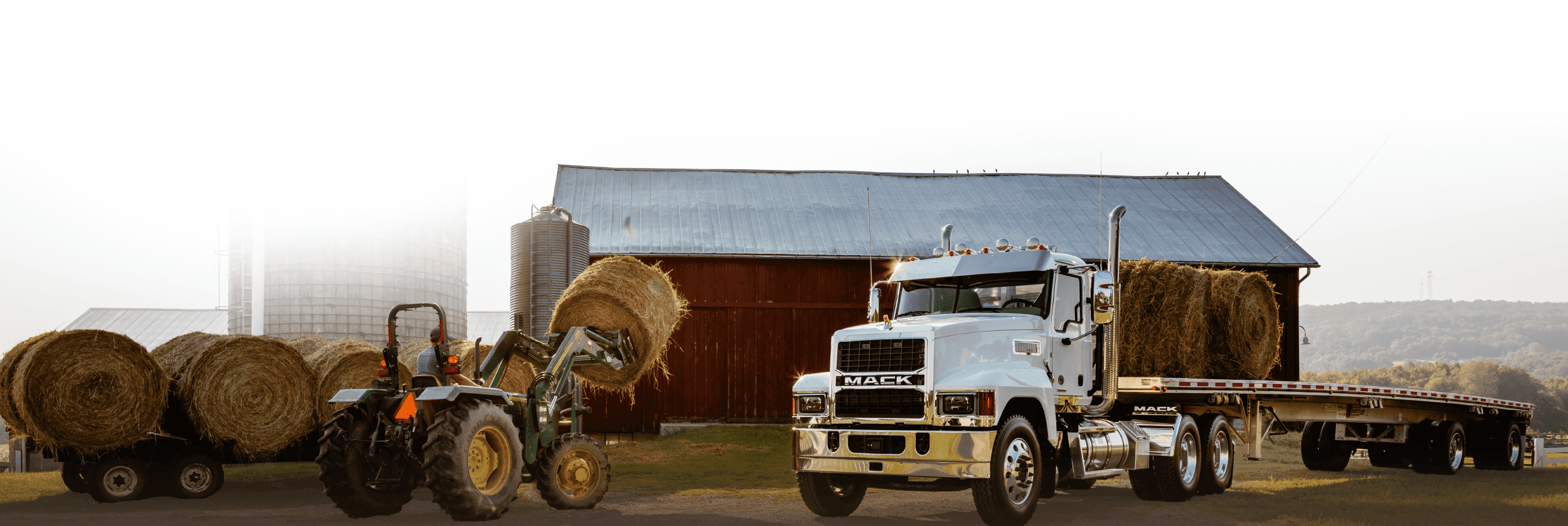When a truck, trailer, or support rig goes down in the middle of harvest it can cause loads to miss their window, crews idle, and contracts tighten. This playbook gives you a clear, field-tested path from “it quit” to “we’re rolling.” Keep it handy for operators, field supervisors, and dispatch. If you need help beyond what’s here, our team can step in with mobile diagnostics and in-shop repairs—start with truck service or parts for the fastest route back to work. TEC is here to get you back on the road and be your best harvest partner.
Quick triage checklist:
- Make it safe: chock wheels, set triangles, kill PTO/hydraulics, note fault lights
- Capture symptoms: odd noises, smoke color, fluid smells, temp spikes, derate messages, regen status
- Check the basics: fuel level/quality, battery connections, belts/hoses, coolant, visible leaks, air lines, fuses
- Record asset info: VIN, unit #, engine model, fault codes, GPS pin, best callback number
- Decide path: quick field fix → limp to yard → call mobile service → rent/replace
Common harvest-season failures and fast actions
Cooling system overheating
High debris load plus long idle time can push equipment temps up fast. Blow out radiators and CAC daily, confirm coolant level and concentration, and inspect fan hubs and belts. If you see a temperature spike, idle down, clean the stack, and verify fan engagement. Persistently overheating or milkshake-like coolant means stop and call service – continuing risks head damage.
Fuel delivery & DPF/aftertreatment issues
Short runs, dusty conditions, and idling can put additional strain on your DPF system triggering frequent regens or derates. Verify good fuel (water/contamination kills uptime), swap clogged filters, and complete a parked regen per OEM procedures. If the truck won’t start a regen or derates repeatedly, plan a mobile diagnostic and DPF clean post-shift; avoid prolonged operation at reduced power.
Electrical gremlins
Harvest vibration exposes weak grounds and corroded connectors. Start at the battery box: tighten, clean, and check voltage; then fuses/relays and high-chafe harness points near the frame and cab tilt. If multiple systems fail at once, suspect ground straps.
Air & brake concerns
Soft pedal or slow build? Listen for leaks at couplers and air dryer. In dusty fields, water/dust mix accelerates wear – drain tanks and inspect hoses/dryer cartridges. Any ABS fault while loaded warrants cautious movement and quick inspection before re-entering traffic.
Hydraulic/PTO systems (support rigs & trailers)
Heat and contamination are the enemies. Check fluid level, filter restriction indicators, and quick-disconnect integrity. If oil looks burnt or foamy, cool down and filter/replace before resuming. Never bypass safety interlocks.
Field fixes that buy time without buying a bigger failure
- Belts & hoses: carry matched spares for top units and replace at first fray or glazing
- Filters: stock primary/secondary fuel and air elements; log every field swap for proper service follow-up
- Sensors & line items: keep MAF/MAP, coolant level sensors, lamps, gladhand seals, and air line repair kits on hand; swap in-field to clear nuisance faults and keep trucks rolling
- Cooling stack cleaning: make it a scheduled task—once per shift
- Battery maintenance: terminal brush, dielectric grease, and spare fuses/relays reduce “no-starts”
Rule of thumb: if a quick fix restores normal temps, pressures, and no fault lights return after a short validation run, you can finish the shift then schedule a shop check. If faults persist or derate continues, call mobile service.
When to call mobile service vs. limp to the shop
Call mobile service when:
- You’re derated, overheating, or have active DEF/DPF faults.
- You’re loaded roadside or blocking a field access.
- Brake, steering, or coupling issues affect safety.
Limp to the shop only if:
- Vitals are stable (temps/pressures), no safety faults, and you’re light/unloaded.
- You’re within a short, flat route with no high-heat or steep pulls.
Parts and rentals to keep the day on track
During harvest, don’t wait on multi-day shipments. Use local parts delivery for filters, belts, hoses, lamps, sensors, and brake/air components. Our teams can pull by VIN, verify fitment, and arrange pickup or delivery, start with Semi-Truck Parts. When your fleet is stretched or a unit goes down hard, fill the gap with a short-term rental, day cabs, box trucks, and spotter tractors sized for ag work. See Commercial Truck Rental to bridge equipment shortfalls fast.
Mid-season maintenance that prevents the next emergency
- Interval checks: mid-season lube service, valve adjustment per OEM schedule, and cooling system inspection
- DPF care: inspect differential pressure sensors and plan a clean after the heaviest push
- Air systems: dryer service and tank drains reduce winter freeze-ups and current leak headaches
- Tires: stubble-resistant positions where applicable; daily pressure checks catch nail/stubble damage
- Driver feedback loop: train operators to report odd smells, new vibrations, decreased fuel economy, and temperature spikes immediately – small “tells” prevent big bills\
- Document & debrief: log every failure and fix; use the records to guide smarter off-season upgrades
If harvest is on the line
Sometimes the best move is a “two-track” plan: dispatch mobile service to the down unit and rent a backup to keep loads moving. If you need local support and fast response, Find Your Nearest Location and Inquire Today.






